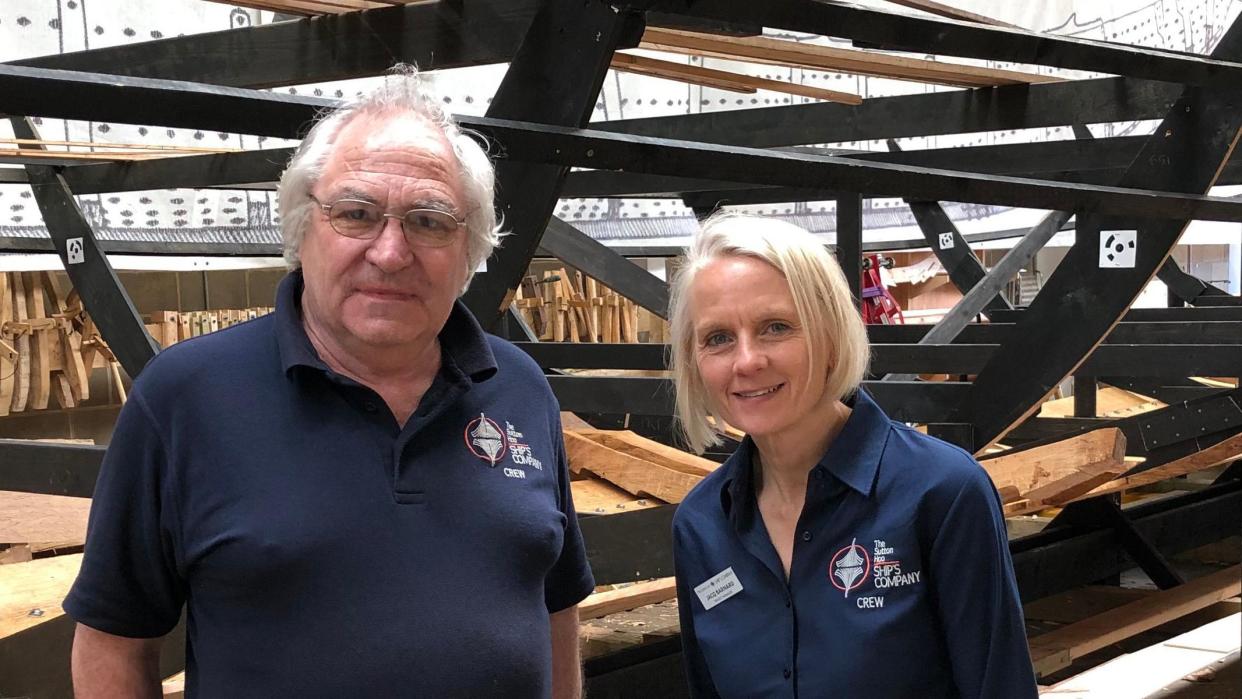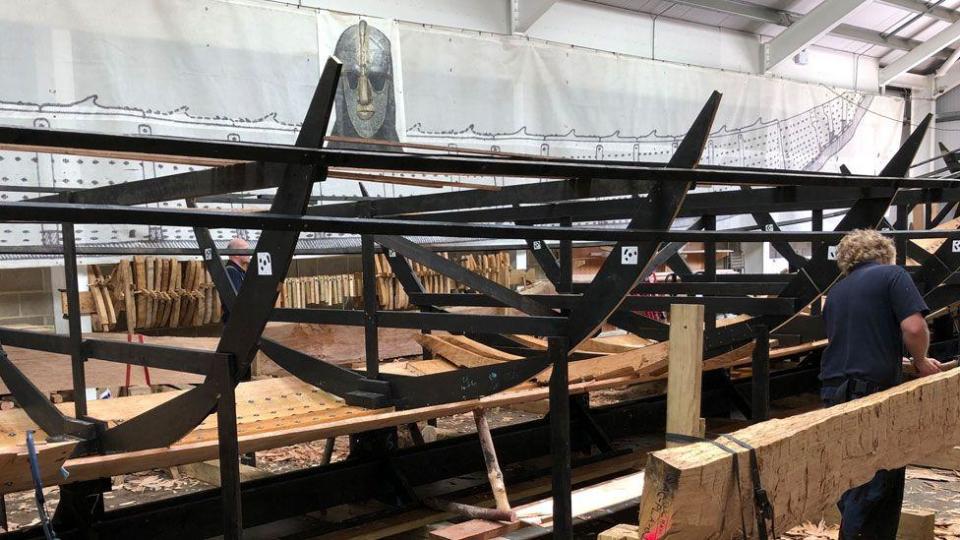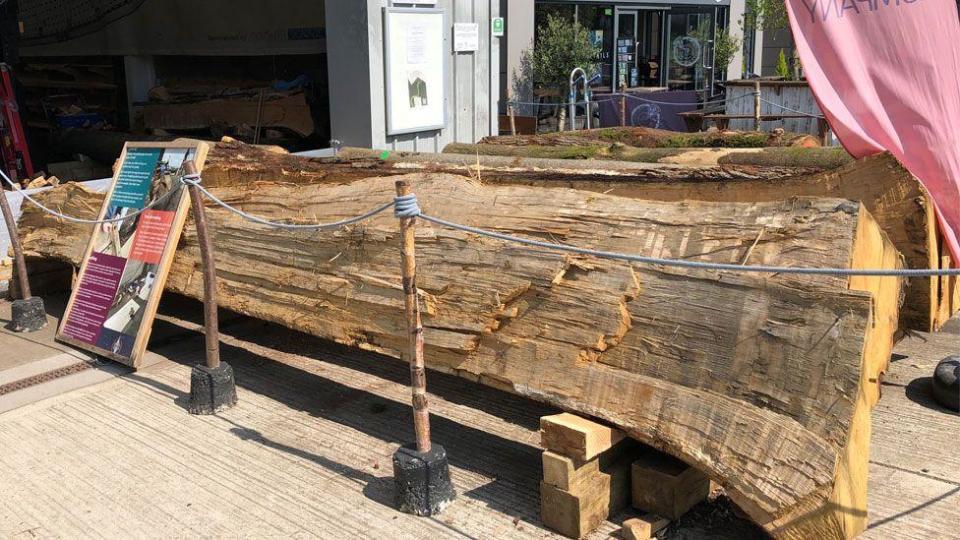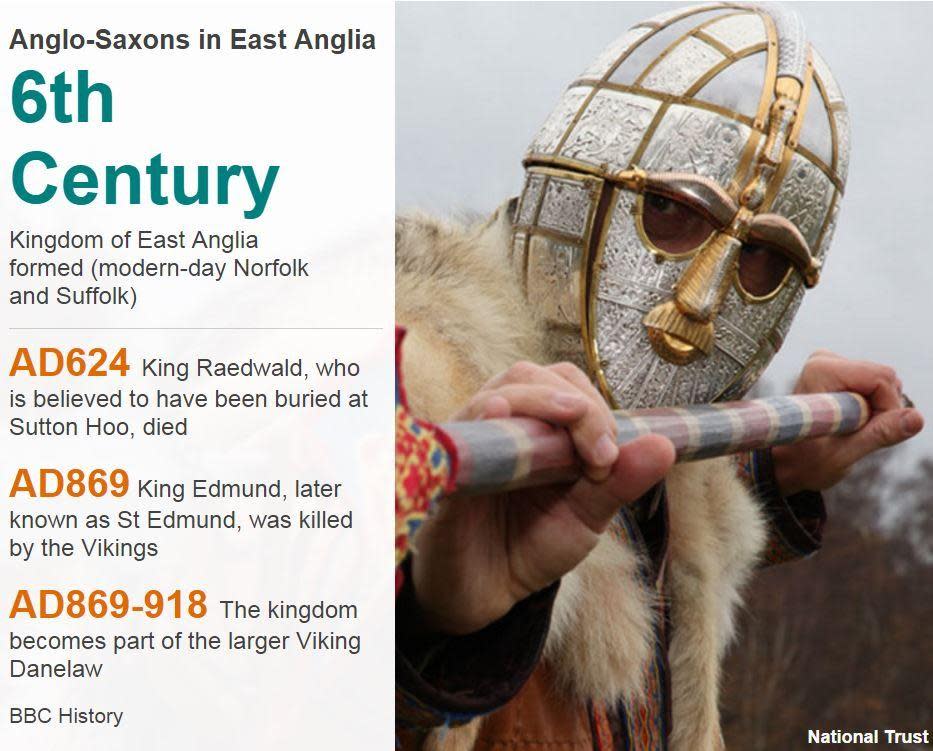Sutton Hoo replica ship launch delayed until 2026

Plans to launch a replica of the Anglo-Saxon burial ship found at Sutton Hoo have been put back a year.
The 88ft (27m) reconstruction of the ship, excavated in 1939 near the Suffolk coast, is being built in Woodbridge - just across the River Deben from the burial site.
The volunteers behind the project had hoped to get the vessel afloat by summer 2025 but were now looking towards spring 2026.
Master shipwright Tim Kirk said it was "disappointing", but struggles to source the last few oak trees, Covid delays and the wet autumn and winter had all contributed to the delay.

"I've always said this is one big-problem solving project and when we've solved all the problems, the ship will be finished and she'll go into the water and the next phase of the project, the trials, will begin," said Mr Kirk.
The ship's "backbone" - including the keel, stem and sternpost - has been built and carpenters have been attaching planks with rivets, using traditional methods.
In March, the volunteers appealed for help sourcing the three oak trees needed to complete the ship.
Mr Kirk said that since then they had been "very fortunate to get one very large oak tree" from the National Trust's Ickworth House estate, near Bury St Edmunds in west Suffolk.
The project requires the trees to be at least 1.2m (4ft) diameter at chest height and be 6m-10m (19ft-32m) long, with a very clear trunk, without branches.
The Anglo-Saxons had access to very large trees which are much harder for 21st Century boat builders to source.
The story of the ship's discovery was told in the Netflix film The Dig, starring Carey Mulligan and Ralph Fiennes.
It was believed to be the burial ship and grave of King Rædwald - the 7th Century Anglo-Saxon ruler of East Anglia.

Mr Kirk said the wet weather had also delayed the recovery of both the Ickworth oak and four ash trees donated at the same time for use as oars.
"These trees were felled in January and it wasn't until the beginning-to-mid-April that they could get them off the soft ground," he said.
Other delays included a year for the Covid pandemic and a six month hiatus when part of the ship split and a replacement needed to be sourced.
This also adds to the costs for the £1.5m project.
About 142 volunteers and apprentices, with a range of skills from carpentry to photography, support the project.

Follow Suffolk news on Facebook, Instagram and X. Got a story? Email eastofenglandnews@bbc.co.uk or WhatsApp us on 0800 169 1830


